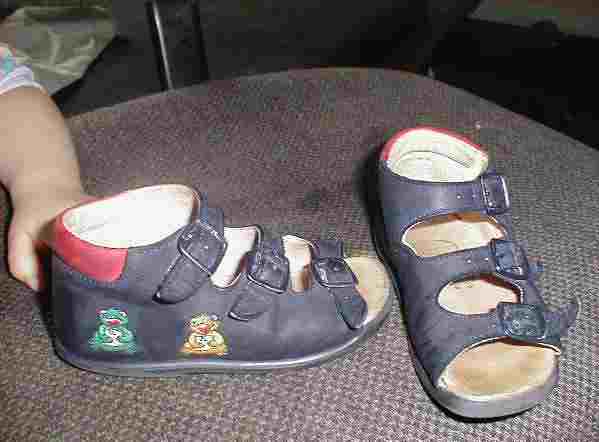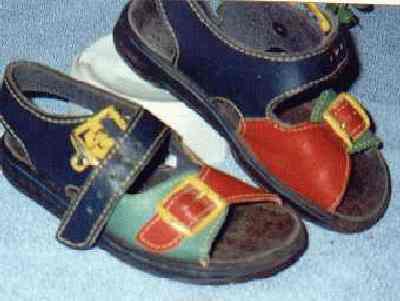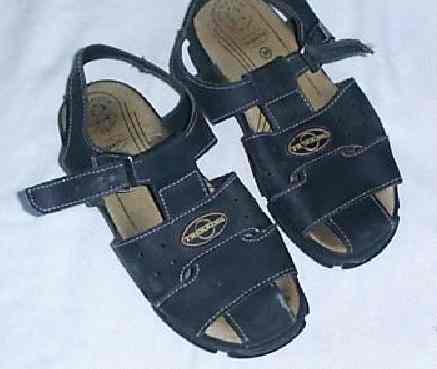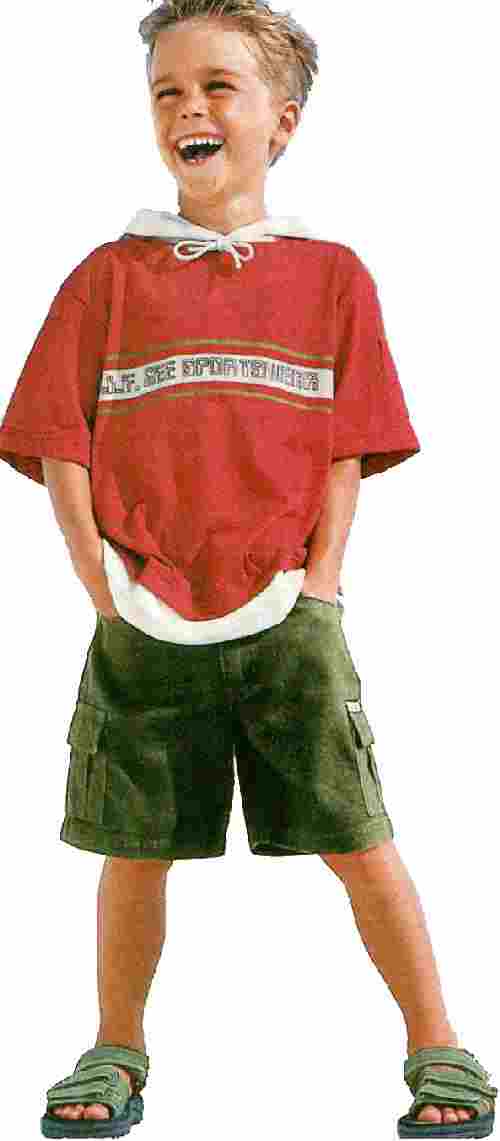
Figure 1.--This is an todler open-toe style. Note the solid back for added support. Also note the cartoon characters, in this case friendly looking bears.


Figure 1.--This is an todler open-toe style. Note the solid back for added support. Also note the cartoon characters, in this case friendly looking bears. |
German boys wore a wide variety of open toe sandals, nostly in the post World War II era
(1950s and 60s). One German HBC contributor reports that the open-toe style became
popular after the War because they were cheap and less material were needed for making
them. These times raw materials were rare. You needed less leather to fabricate an open
toed sandal than for a shoe or boot. Some sandals right after the War were even made of
old car tires! The closed toe sandal was the dominmate style and more popular in
Germany than in other European countries. The sandals varied in how open they were.
Some had fairly solid arches. Other had "T"-strap stuctures despite the open toe. Some of the major stylistic differences were a function of ages and gender. Styles for younger children might have cartoon designs or playful characters and be made in bright colors. Older boys like plainer colors. Girls sandals had some destinctive styles, usually thinner straps or colors like pink or light blue.
Infant sandals were made with solid backs, presumably to provide more supprt for a youngster just beginning to learn to walk. This style is often called "Lauflernsandale". That means something like "walk" (Lauf-) "learn" (-lern-) "sandal" (-sandale). Or
learn-to-walk-sandal. The sandals also have padded straps and body, again to provide more support. Styles for infants often have cartoon designs or playful characters and be made in bright colors. Both boys and girls wear them. But in different colors. The one in the picture above looks more like a boys' sandal because it is grey. The age of the children wearing these sandals can vary. It is the youngest children that will wear the sandals with the cartton characters. The younger children will also wear the brighter colors. The sandals for the younger children also often have large buckles.

Figure 2.--This younger boys' sandal is still brightly colored, but note the back is no longer solid and there are no cartoon chatacters. This was a popular style of sandal in the 1980s. |
Boys at about 5 years will begin wearing the style for older children. The primary difference is that the back is no longer enclosed. Also the sandal straps are no longer padded, but instead plain leather straps. There are many different styles with varrying arrangements of the straps and buckles and differing strap width.
The "H" strap design is where straps cross the arch of the feet without any center "T" structure. Usually there are two major straps. Often the straps are very wide losing the apparance of narrow straps. The shape of the straps and color combinations have varied over time. Many of these "H" strap sandals were not very open. There was an open toe and there may be an ooen area between the twi large straps, but much of the foot was covered.

Figure 3.--This sandal was worn by an older boy. Notice the plain color. Also notice the "T" strap style. It was not nearly ascpopular as the "H"-strap design. |
The "T" strap design is often associated with the classic English closed-toe school sandal. Some open toe sandals were also made in the "T" strap design althoyh the strap may partially cover the open toe design.
I am not positive yet just what the fisherman's style is.
A new style of open toe sandal appeared in the late 1980s or early 1990s to compete with the sneakers that had become very popular with boys. These new sports sandals were made by the major sneaker companies. Sneaker sales wre declining and they were an effort to create a hot new product. Sandals were a style that was not well suited for sports or active play, in part because of the sole. The sports sandal combines tye superior traction of a sneaker sole with the more comprtable upper structure of the sandal. The sports sandal was also construced to provide a very secure strapping arrangement so that the sandal will not come off in active play or sporting activity. In could be worn, for example, while play pick-up games of football (soccer)--important for a Germam boy. In America they proved popular with boys who had never wore sandals before. I'm not sure what the reaction of German boys were. Mothers have generally been the ones choosing sandals. Boys mostly preferred sneakers. This may be somewhat different for sports sandals. As in Anerica, they may have proven muchbmore acceptable to the style comcious boy. This needs to be confirmed, however, with HBC's German contributors.

Figure 4.--This boys wears the sport sandal that became popular in the 1990s. |
Girls sandals have been largely similar to boys' styles. The most obvious difference is usually the colors. The girls' sandals often had very elaborate color combinations. While younger boys might wear sandals in basic colors like red and blue, girls were prepared tomwear all kinds of shades in pirple, lilac, pinl, various pastels, and other colors. The starps are often thiner are shaped differently. The girls' "H" strap sandals often had only one over lapping strap while boys often had tw.
Navigate the Boys' Historical Clothing Sandal Pages:
[Return to Main German sandal page]
[Return to Main shoe page]
[Return to Main German page]
[German closed toe sandals]
[German open toe sandals]
[German strap shoes]
Navigate the Boys' Historical Clothing Web Site:
[Return to Main German sandal page]
[Return to Main shoe page]
[Return to Main German page]
[Introduction]
[Activities]
[Bibliographies]
[Biographies]
[Chronology]
[Clothing styles]
[Contributions]
[Countries]
[Boys' Clothing Home]
